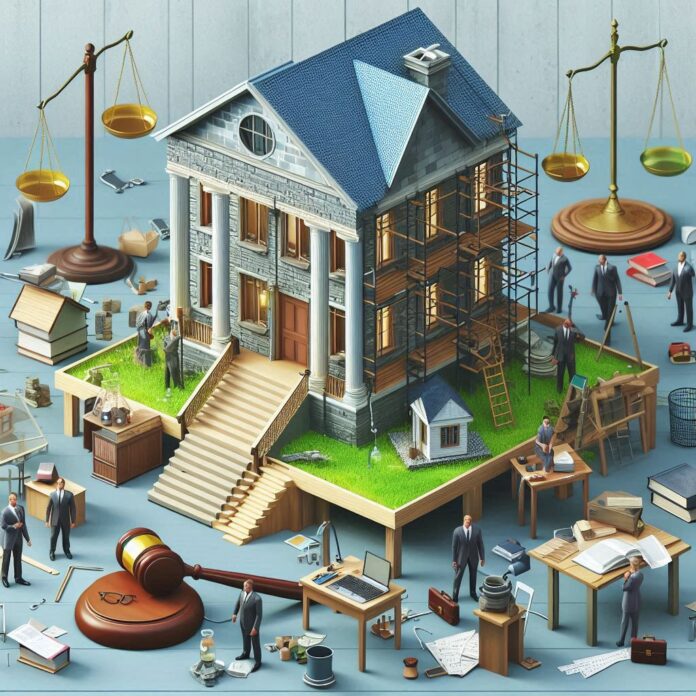
Whether an individual sustains an injury on someone else’s property, be it a minor slip and fall in a grocery store or a major accident on a construction site, premises liability law applies.
Every year, state courts in the United States receive nearly 400,000 claims for personal injuries, with a projected 78% increase in claims filed through March 2024, according to the US Department of Justice.
According to premises liability lawyer Jeff Wolf, premises liability is a property owner’s obligation to guests. Owners must maintain properties so people are not at risk. A premises liability attorney explains the complexities of the case. They scrutinize whether the property owner violated their duty of care.
A profound understanding of how lawyers view these principles can change your claim significantly. Continue reading to gain insight into how lawyers establish property owners’ faults to bolster your claim.
Understanding Premises Liability Law
A Baton rouge premises liability lawyer says most premise liability cases are caused by someone slipping and falling or tripping and falling. People often get injured or hurt on properties belonging to or run by a person or business. You have the right to compensation from the property owners for the cost of your injury, lost wages, and your pain and suffering.
Premises liability means that property owners must make sure that their land is safe for visitors. If the floor is slippery, the stairs are broken, or the light is low, the owner must either fix the problem or let the visitors know about it. It is important to know this law to help you understand how to protect yourself if you get hurt.
Generally, a visitor classification (invitee, licensee, or trespasser) dictates the type of care an owner is required to exercise. Understanding these distinctions can enable you to guide yourself through the confusion of claims surrounding injuries sustained on somebody else’s property.
Key Elements of Proving Fault
There are several very important things to consider when establishing faults in a premises liability case.
1.You must prove that the property owner owed you a duty of care, meaning they had to keep the premises safe.
2.There is a need to show that the duty was breached; the fault lies on the owners if they have neglected to repair defects or they did not warn others of the hazards in the property.
3.Demonstrate that your injury was an actual consequence of the breach of duty.
4.Prove that the injuries sustained has caused damages; this includes the medical expenses and loss of wages due to inability to work after the injury.
Each of these aspects plays an indispensable role in fleshing out an impeccable case and laying the blame on the negligent landowner.
Gathering Evidence and Documentation
Gathering evidence and documentation constitutes the most important step in putting together a solid case of premises liability.
- Take pictures of the accident scene, hazards that could contribute to injury, and other contributing circumstances first and foremost. Keep a record of the date and time, as it could potentially connect to the cause.
- Collect medical records detailing your injuries and their treatment. They demonstrate the extent of your damages and might be required for remuneration.
- Remember the incident reports prepared by the property owner or manager. They shed light on the circumstances surrounding your injury.
- Make sure to combine the bills or receipts linked with your medical treatment.
Once fault has been established, your case becomes stronger with more solid documentation.
The Role of Witnesses in Establishing Liability
Witnesses are often invaluable in establishing a property owner’s liability. Their testimonies enlighten the circumstances of your injury. Perhaps in their observation, these witnesses will testify that a dangerous situation existed or that a property owner was aware of it but took no actions.
When collecting witness statements, they must be credible and consistent. Once gathered, the statements form a timeline of events, highlighting the property owner’s negligence.
Witnesses, such as safety inspectors, can bolster your case by elucidating the accepted industry standards and their violations. Essentially, the quality of witness testimony has the power to either strengthen or weaken your case.
Dealing with Local Laws and Regulations
Each state and municipality specifies the rules by which liability is determined.
There is considerable variation in the standards of laws and regulations in different areas. In some jurisdictions, commercial property owners might be held to a higher standard of care than residential ones. You should know the standards in your state to make sure that this works in your favor.
The statute of limitations is another example. This dictates how long you have to bring in a claim, and again, these differ widely. Recognizing the laws can help you consider the strength of your case and help you from making some very costly errors.
A skilled premises liability lawyer will keep you from getting caught up in these details.
Your safety must always be kept at all times and in any location. But once this right is taken away from you, you are entitled to receive remuneration for your pain and suffering.





